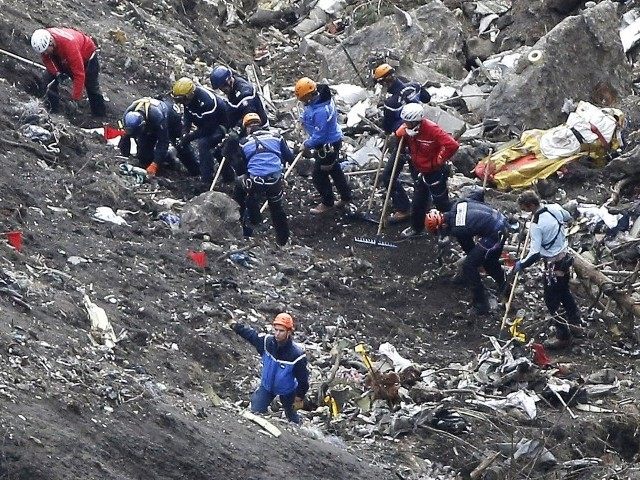One of the details investigators of the Germanwings crash have been trying to nail down is whether co-pilot Andreas Lubitz planned his mass murder/suicide in advance or made a spontaneous decision to bring the plane down.
The Associated Press reports the discovery of vital clues that Lubitz planned his actions with some care. These discoveries will doubtless add to public incredulity that he was allowed to fly, although his employers couldn’t have been expected to monitor which websites he was visiting.
According to the AP, investigators have gone through the search history in Lubitz’ tablet computer and discovered he was researching three topics in the days before the fatal flight: medical treatments, methods of committing suicide, and the security of airline cockpits, particularly the cockpit door locking methods. He would go on to destroy Germanwings Flight 9525 by locking the captain out of the cockpit and dropping the plane into the Alps.
His research into cockpit doors apparently wasn’t extensive — the prosecutor who spoke with the Associated Press said Lubitz searched for cockpit security information “for several minutes” on “at least one day.” Since Lubitz was already a trained pilot with a few hundred hours of flight experience, he doubtless already knew the basics. He might only have needed to pin down a few particular details, such as whether the captain could over-ride the door locking mechanism inside the cockpit, or the likelihood that brute force could breach the door during the eight minutes it took to bring the plane down.
Unsurprisingly, the governments of both Germany and France (where the crash occurred) have announced they would review cockpit security procedures and the psychological screening requirements for flight crew.
Prosecutors would not discuss the details of the medical information Lubitz was researching, but previous reports have said he was dealing with a serious vision problem that might have ultimately disqualified him from flying.
The plane’s flight data recorder has also been located at last, and while it has been damaged by fire and impact, it was deemed “possibly useful.” CNN reports one bit of useful information already recovered from the “black box”: Lubitz “purposely used the controls to speed up the plane’s descent.”
It was previously established that he used the autopilot to set up the crash, performing a fairly gradual descent into the Alps, but now it seems there were several moments when he overrode the autopilot to increase the speed of descent — possibly in response to the captain’s increasingly frantic efforts to re-enter the cockpit. This is further evidence that Lubitz knew exactly what he was doing, which is relevant to the murder charges shaping up against him. One of the lingering questions about his actions is why he took eight minutes to bring the plane down, even after it was clear the captain and passengers knew something was wrong. It has been theorized that he wanted to make his suicide less agonizing, or even that he didn’t want to terrorize the passengers more than necessary before their essentially instantaneous demise.
The AP and CNN also provide a grim tally of 2,854 body parts, 470 personal effects, and 42 damaged cell phones recovered from the scene.
There is still quite a bit of controversy over the claim by reporters from French and German newspapers that they’ve seen video from one of these cell phones, capturing the final terrifying moments of the flight. The Paris Match and Bild papers are standing by their story, while a spokesman for the French police has flatly declared the video is a fake, and prosecutors have said they are aware of no intact video extracted from the cell phones recovered at the site.

COMMENTS
Please let us know if you're having issues with commenting.